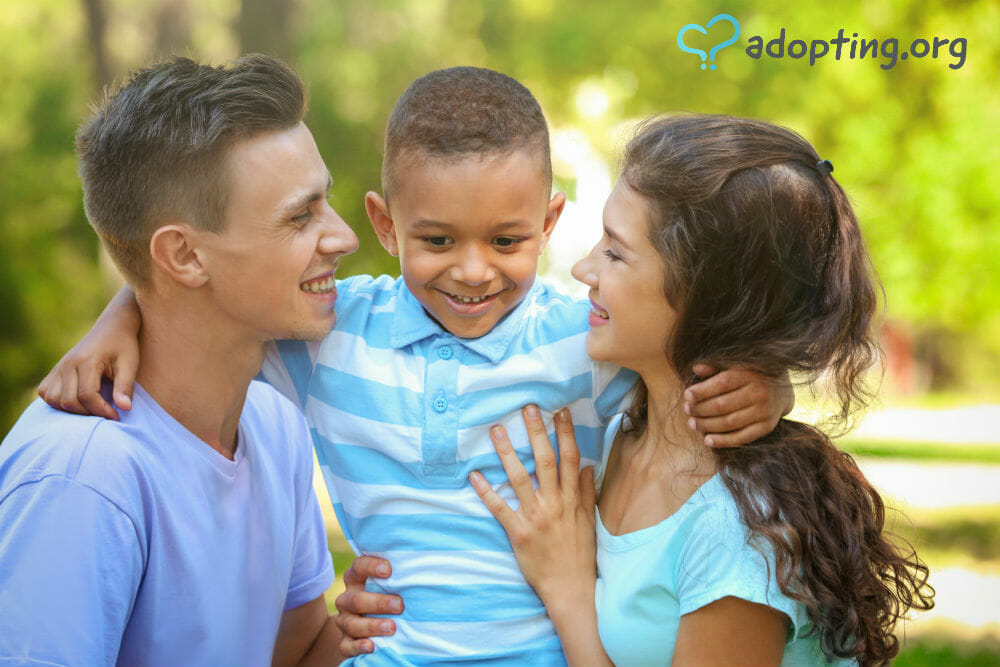The decision to grow your family through adoption is life-changing. Providing a home for a child who doesn’t have one is one of the most affirming, satisfying, and fearless things you can do. Before you embark on your journey, you may be wondering how long it will take, and what steps there will be along the way. Here are some ideas.
The Foster Care Adoption Process
In some states, there are two separate tracks for becoming foster parents or adoptive parents. Many, however, are beginning to authorize families for becoming both at the same time, known as dual licensing. This helps to streamline the process and avoid delays.
If you are interested in adopting through foster care, the first part of your adoption process will involve an application that involves a home inspection, criminal background check, letters of recommendation, proof that you have met your state’s minimum age requirement, and verification of income.
You will then complete a preadoptive training that varies from state to state. All of these programs present behavioral issues that will manifest in children who have been abused, neglected, or exposed to substances at a young age. You will learn about ways to discipline differently and bond creatively with your child.
In addition to preadoptive training, a home study is sometimes required. This will involve interviews, letters of reference, and documentation of important information. It can also be an opportunity for you to talk about your preferences in terms of the child you will be matched with including age, gender, and special needs. Your home study will be used by your caseworker and can be shown to others in foster-to-adopt programs or across state lines.
If you are approved to adopt or dual-licensed, you can begin looking at the U.S. photolistings or on state photolistings as soon as you get your license. Photos of your family, home, pets, and interests help your profile stand out from others. If you express an interest in a child or sibling group, the caseworker in charge of that child may ask to view your full home study. He or she will then determine if you are the best family for the child.
If you are chosen, a match occurs, and you are then given more complete information about the child before making your decision.
Adoption usually occurs within nine months after a child enters your home if your child’s parental rights have been terminated. It involves a hearing at which adoption papers are completed.
Adoption through foster care rarely costs more than $3,000, and many states have subsidies that cover this cost. The national adoption tax credit and adoption grants can also be used to defray your expenses. Children adopted through foster care are eligible for free health insurance in the form of Medicaid, ongoing counseling services if needed, and college tuition assistance.
The Domestic Adoption Process
Domestic adoption costs anywhere from $20,000 to $30,000 including home study fees, legal fees, and medical and counseling expenses for the birth mother.
The first step to take when pursuing a domestic adoption is to find an agency or adoption lawyer who you are comfortable with that will walk you step-by-step through the process. One popular domestic agency is Spence-Chapin. A great place to start looking for an adoption lawyer is the American Academy of Adoption Attorneys, an association of professionals who have presided over at least 50 adoption proceedings.
When you talk to agencies or attorneys you are considering, ask about the number of adoptions they completed last year. What were the age, gender, and ethnic background of the children? How long should prospective parents expect to wait before being matched with a child?
Most agencies begin with a general application that asks about your age, job type, and place of residence. You will then participate in a formal home study that requires three letters of reference, proof of financial stability, a physical examination, interviews, and a home inspection. You may also be asked about hobbies, interests, and any plans for childcare if you and your spouse are both working.
Many agencies now require a photo album or online profile that includes photos of your home, pets, and anything else that sets your family apart. Birth mothers will view profiles and choose a family for their child.
After a birth mother chooses you, it will be time to travel to the hospital the day your baby is born. If you are adopting from another state, you will need to complete the Interstate Compact on Placement of Children, which takes 8-14 days after placement once the documents are signed. The adoption is finalized in court.
The International Adoption Process
If you are interested in adopting internationally, the first step is to choose an accredited agency to work with. Some popular U.S. agencies with international programs include Spence-Chapin and Children of All Nations.
Most countries the U.S. works with are Hague countries. These nations have agreed to a set of rules and standards that ensure transparency and legality throughout the adoption process.
Once you have completed an application and home study, a dossier with all of your legal information will be sent to the country you are adopting from. The country’s officials will match you with a child based on your traits, characteristics, and specifications in terms of age, gender, and needs. Before adopting a child, you must file an application with USCIS to make sure the child is eligible to be adopted in the U.S. You will be given an opportunity to look over your child’s information before accepting a referral.
Once you have accepted your referral, you may travel to meet your child if your country requires more than one trip. The first trip is a meeting in which both you and the child begin to bond and learn more about each other.
Adoption cannot be completed until you file an I-800A form, the Application for Determination of Suitability to Adopt a Child From a Convention Country, to establish eligibility and suitability. Once it is approved, you can submit an I-800 form, the Petition to Classify Convention Adoptee as an Immediate Relative. This will determine the child’s eligibility as Hague Convention Adoptee.
Finally, you can travel to your child’s country to adopt him or her. Some countries have bonding and appeals periods, and many require you to appear there in court. You will need a Visa and passport before traveling as well.
The adoption process is involved, but it is worth the effort and expense when your home lights up with the laughter and warmth of a new child in a loving family.




